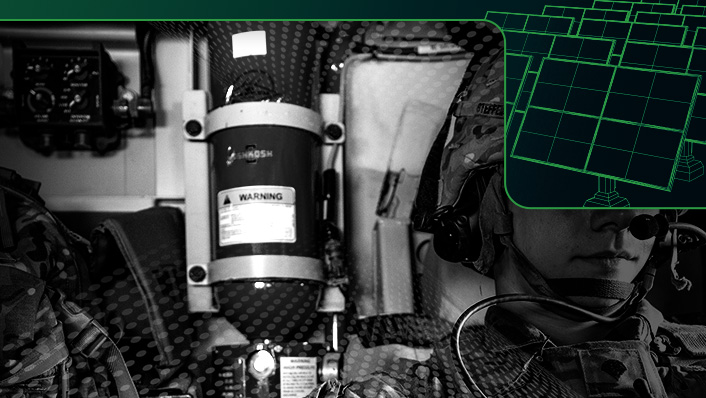

Objective
The goal is to explore potential opportunities surrounding a non-HFC based fire extinguishing agent or system, which is needed for ground vehicle crew automatic fire extinguishing systems (AFES) to protect Soldiers and their equipment.
Description
The production and import of hydrofluorocarbons (HFC) are being phased down due to their high global warming potentials (GWP), as mandated by the Kigali Amendment to the Montreal Protocol and the American Innovation and Manufacturing (AIM) Act of 2020.
Rather than relying on recovered HFCs or building a stockpile ahead of the impending shortages of these chemicals, the Army wants to minimize, or eliminate, the use of HFC-227ea for ground vehicle crew fire protection applications.
Phase I
Once developed, the technology’s extinguishing effectiveness, performance and safety will be tested in a full-scale testbed at the U.S. Army Aberdeen Center.
Phase II
The full-scale system is demonstrated and tested within a laboratory environment.
Phase III
After system capabilities are established, the technology will be integrated into one or more ground vehicles and evaluated against the Army’s criteria.
For the actual submission dates and to submit your full proposal package, visit the DSIP Portal.

References:
TPOC-1: Dr. Sebastian Karwaczynski
Email: Sebastian.k.karwaczynski.civ@army.mil
Objective
The goal is to explore potential opportunities surrounding a non-HFC based fire extinguishing agent or system, which is needed for ground vehicle crew automatic fire extinguishing systems (AFES) to protect Soldiers and their equipment.
Description
The production and import of hydrofluorocarbons (HFC) are being phased down due to their high global warming potentials (GWP), as mandated by the Kigali Amendment to the Montreal Protocol and the American Innovation and Manufacturing (AIM) Act of 2020.
Rather than relying on recovered HFCs or building a stockpile ahead of the impending shortages of these chemicals, the Army wants to minimize, or eliminate, the use of HFC-227ea for ground vehicle crew fire protection applications.
Phase I
Once developed, the technology’s extinguishing effectiveness, performance and safety will be tested in a full-scale testbed at the U.S. Army Aberdeen Center.
Phase II
The full-scale system is demonstrated and tested within a laboratory environment.
Phase III
After system capabilities are established, the technology will be integrated into one or more ground vehicles and evaluated against the Army’s criteria.
For the actual submission dates and to submit your full proposal package, visit the DSIP Portal.
References:
TPOC-1: Dr. Sebastian Karwaczynski
Email: Sebastian.k.karwaczynski.civ@army.mil
